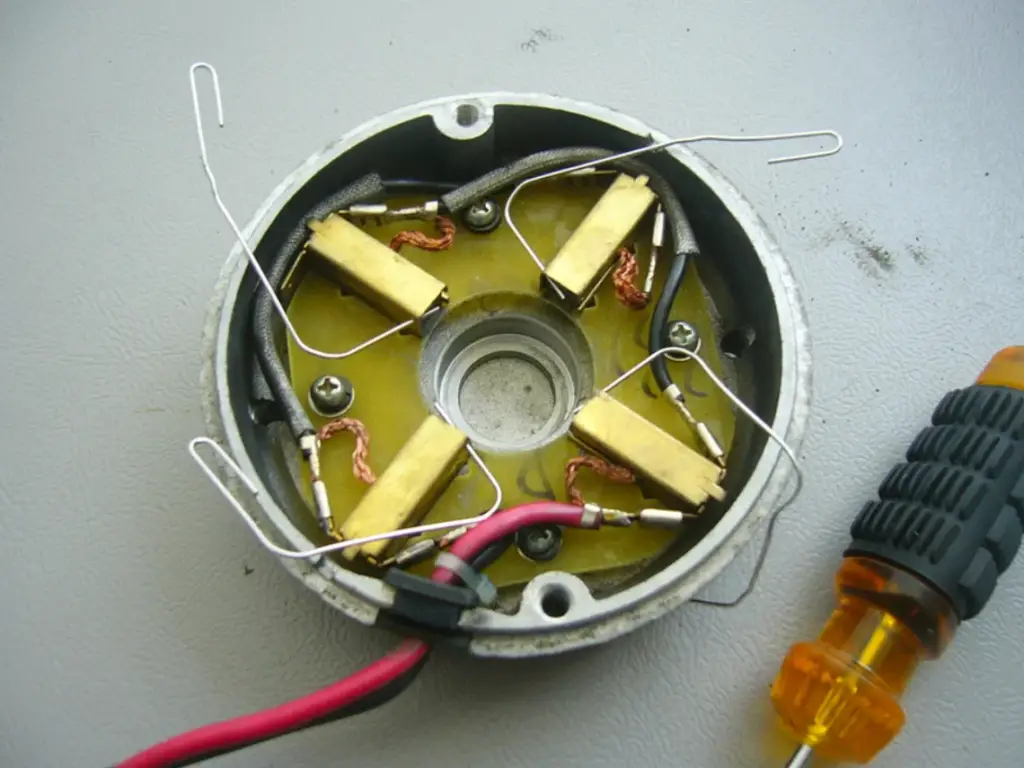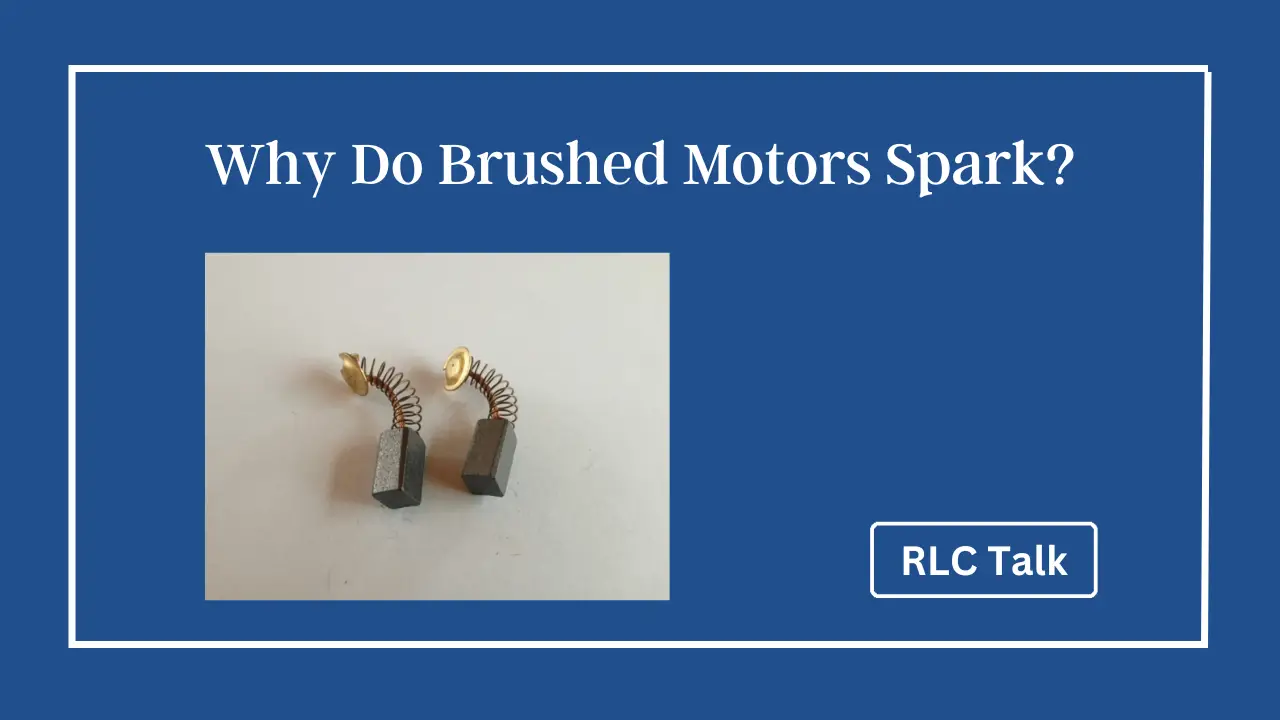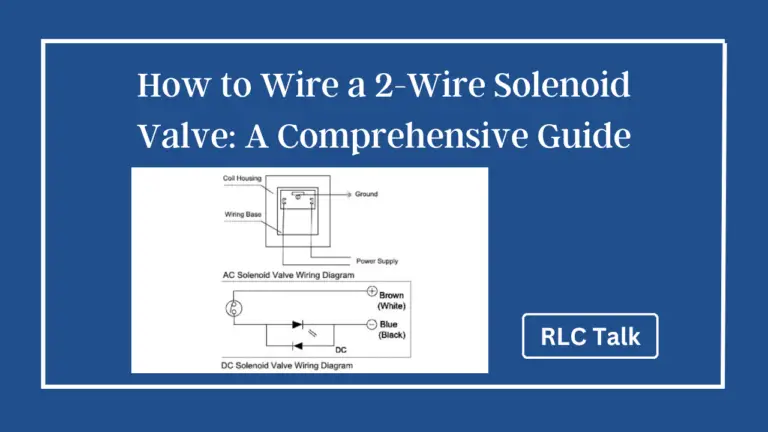Why Do Brushed Motors Spark?
Brushed motors spark due to the commutation process and brush contact, which causes arcing. Factors such as brush wear, high current or voltage fluctuations, and rapid changes in current direction contribute to sparking, leading to energy loss, increased wear, and potential electrical interference.
Brushed motors are widely used in various applications, from power tools to electric vehicles. However, motor enthusiasts encounter one common issue: sparking within these motors. This article will explore the reasons behind sparking in brushed motors and discuss ways to mitigate this phenomenon.
What really are Brushed Motors?

To comprehend why sparking occurs in brushed motors, it is essential to understand their construction. Brushed motors consist of several key components, including brushes and a commutator.
The brushes are typically made of carbon or graphite and are responsible for transferring electrical current to the commutator. The commutator, in turn, helps change the direction of current flow within the motor’s electromagnetic field, resulting in rotational motion.
Will a motor work without brushes?
No, a motor will not work without brushes in a brushed motor design. The brushes play a crucial role in transferring electrical current to the commutator, which in turn generates the electromagnetic fields necessary for motor operation.
The brushes establish contact with the commutator segments, allowing the current to flow and create the necessary magnetic forces that drive the motor’s rotation. Without brushes, there would be no means to establish the necessary electrical connection, resulting in the motor being unable to function properly.
Causes Why Sparking in Brushed Motors
Several factors contribute to the sparking of brushed motors.
Arcing
Firstly, during the commutation process, when the brushes make contact with the commutator segments, sparks can occur due to the rapid change in the current direction. This phenomenon is commonly known as arcing.
Over time, as the brushes wear down, the contact becomes less smooth, increasing arcing and sparking.
High current or voltage fluctuations
Additionally, high current or voltage fluctuations can also contribute to sparking. If the motor experiences sudden surges in current or voltage, the brushes may struggle to maintain consistent contact with the commutator, resulting in intermittent sparking.
What are the consequences of Sparking?
Sparking within brushed motors can have several consequences.
- Energy loss
Firstly, it leads to energy loss, decreasing the overall efficiency of the motor. The electrical energy used for productive work gets wasted in the form of sparks.
- Accelerated wear
Moreover, the increased arcing and sparking cause accelerated wear on the brushes and commutator, requiring more frequent replacements and maintenance.
- Generate electrical interference
Furthermore, sparking in brushed motors can . This interference can affect nearby sensitive electronic devices, causing disruptions or malfunctions in their operation. It is crucial to minimize sparking to avoid potential electrical interference issues.
Oven Coils Spark; Causes, Fixing, and Prevention
rlctalk.com
How can you tell if a brush is bad?
Determining if a brush is bad in a brushed motor requires a visual inspection. Here are some indicators that suggest a brush may be in poor condition:
- Excessive wear: If the brush appears significantly shorter or worn down compared to others, it may indicate that it has reached the end of its lifespan.
- Frayed or damaged bristles: If the bristles of the brush are frayed, uneven, or damaged, it can affect the brush’s ability to make proper contact with the commutator.
- Cracks or chips: Cracks or chips on the brush body can compromise its structural integrity and functionality.
- Discoloration or burning: If the brush shows signs of discoloration, blackening, or burning, it suggests the brush has been subjected to excessive heat or arcing, indicating poor performance.
- Poor spring tension: The spring that holds the brush against the commutator should provide sufficient tension. The spring may not maintain proper contact if it appears weak or loose.
It is important to note that these signs may vary depending on the specific motor design and brush material. If you suspect a brush is bad, it is advisable to consult the motor manufacturer’s guidelines or seek assistance from a qualified technician or electrician for a thorough evaluation and replacement if necessary.
What are the ways to Minimize Sparking?
While eliminating sparking in brushed motors may not be feasible, there are ways to minimize its occurrence.
Regular maintenance
Regular maintenance is vital, including periodic inspection of brushes for wear and damage. Worn-out brushes should be promptly replaced to maintain optimal contact with the commutator.
Using high-quality brushes
Using high-quality brushes and commutators is also essential. High-grade materials and proper design can help reduce arcing and sparking, leading to smoother and more efficient operation.
Implementing proper electrical control measures
Implementing proper electrical control measures, such as employing motor speed controllers or voltage stabilizers, can help mitigate high current or voltage fluctuations. These devices regulate the electrical supply to the motor, ensuring stable and consistent operation, thereby reducing the likelihood of sparking.
Can you repair motor brushes?

Yes, in many cases, motor brushes can be repaired or replaced. When motor brushes become worn, damaged, or exhibit poor performance, they can often be removed and replaced with new ones. However, the repairability of motor brushes depends on various factors such as the motor design, availability of replacement brushes, and the extent of damage.
To repair motor brushes, the following steps are typically involved:
- Inspection: Examine the brushes to determine their condition and identify any issues such as wear, damage, or poor contact.
- Removal: Disconnect the motor from the power source and carefully remove the brushes from their holders or brush caps. This may require disassembling certain parts of the motor.
- Cleaning: Clean the brush holders, brush caps, and surrounding areas to remove any debris or buildup that may interfere with proper brush performance.
- Replacement: If the brushes are worn or damaged beyond repair, replace them with new brushes of the appropriate size and specifications. Ensure the new brushes are compatible with the motor design and electrical requirements.
- Installation: Insert the new brushes into their respective holders or brush caps, making sure they are aligned properly and securely seated.
- Testing: Reassemble the motor, reconnect it to the power source, and conduct a thorough testing process to ensure the repaired brushes are functioning correctly and the motor operates as expected.
Not all motor brushes can be repaired, especially if they are excessively worn or damaged or if replacement brushes are not readily available. In such cases, complete brush replacement may be necessary. It is recommended to consult the motor manufacturer’s guidelines or seek the assistance of a qualified technician for proper diagnosis and repair procedures specific to your motor.
Maximizing Conductivity: The Importance of Solder-Coated Wire Conductors
rlctalk.com
Conclusion
In conclusion, sparking in brushed motors is a common issue caused by brush contact, wear, and high current or voltage fluctuations. Understanding the causes and consequences of sparking is crucial to address the problem effectively. By practicing regular maintenance, using high-quality components, and implementing appropriate electrical control measures, motor enthusiasts can minimize sparking, enhance motor performance, and ensure a longer operational lifespan for their brushed motors.







